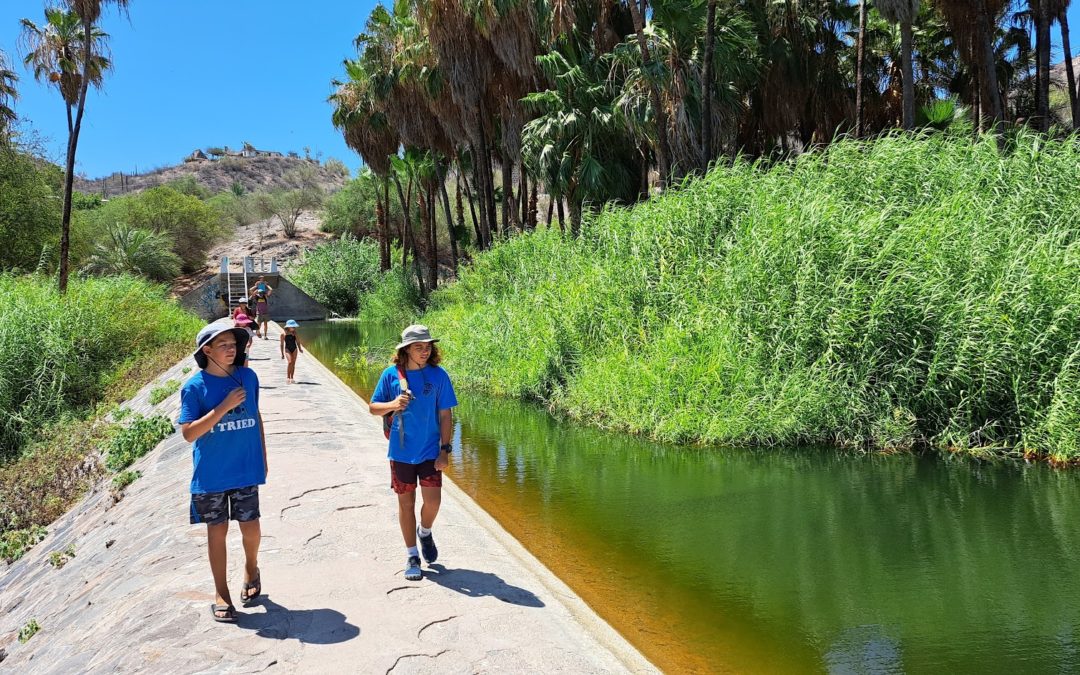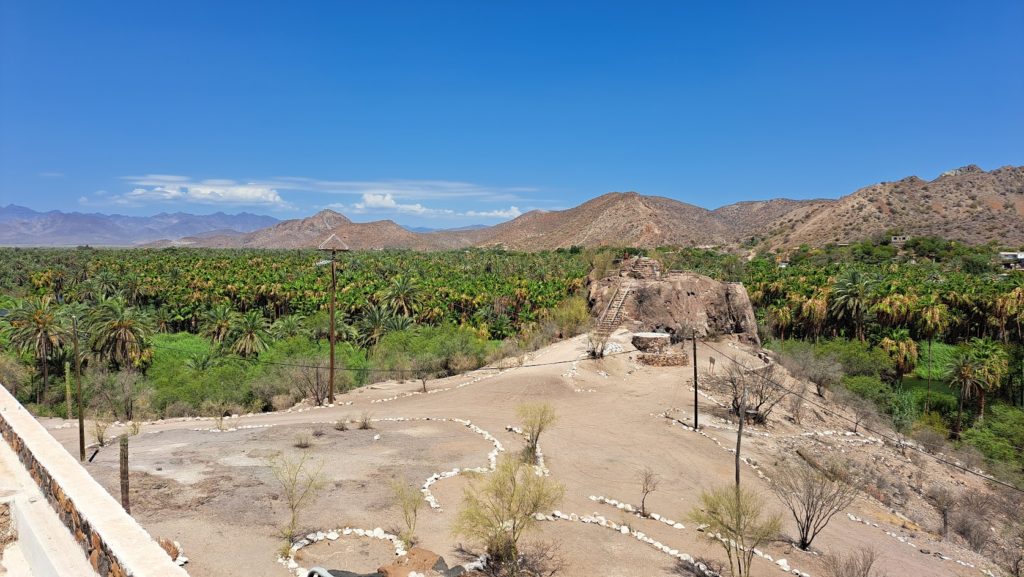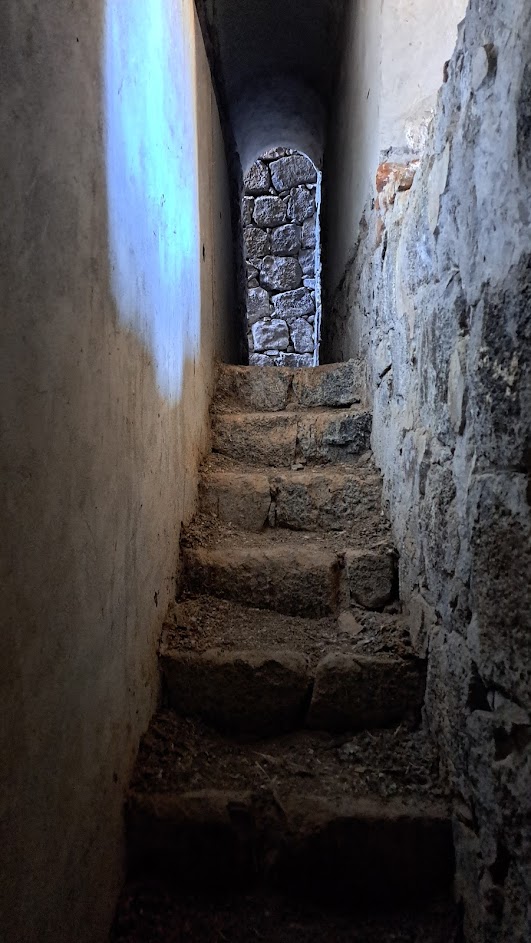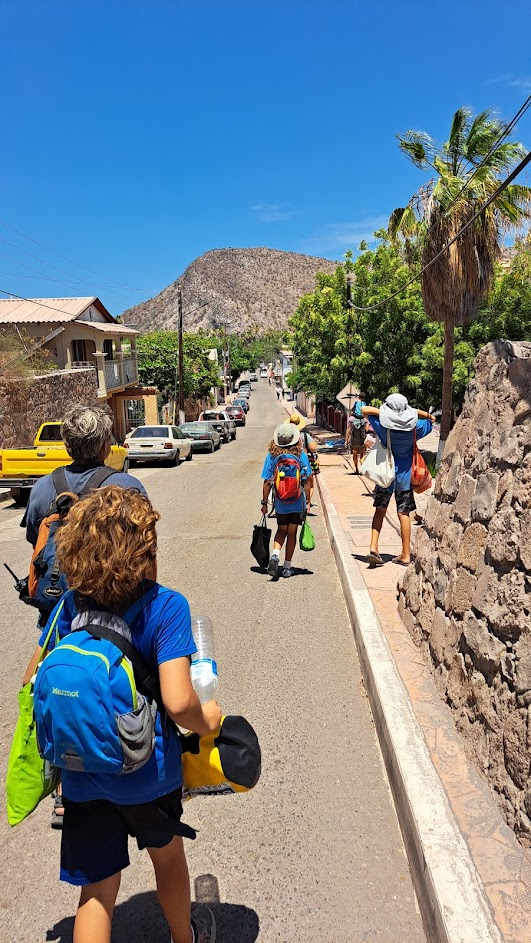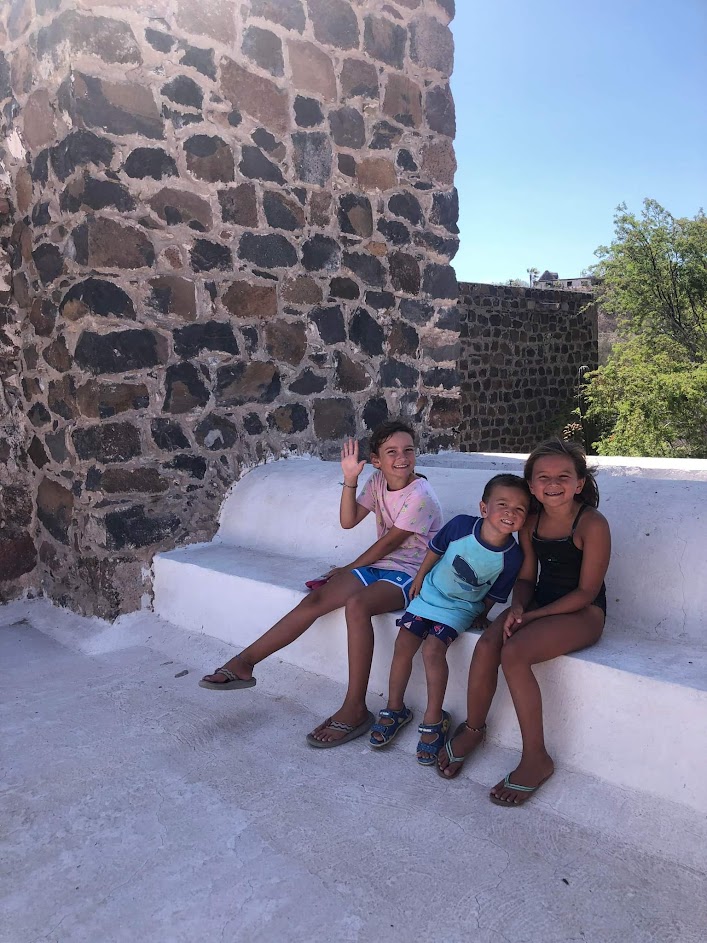This article was previously written by Rachel Messerschmidt for and published by Vancouver Family Magazine in August 2022.
Since my last article, we’ve traveled over 250 miles north from La Paz to Bahía Concepción. We’re taking part in a long-established Sea of Cortez cruiser’s migration. In the spring and summer months, cruising boats move northward to get out of the hurricane zone. The further north into the Sea of Cortez you travel, the less likely you’ll need to contend with a hurricane which could destroy your home.
So, we found ourselves in Bahía Concepción almost half-way up the inside of the Baja Peninsula. And we were low on groceries after several weeks’ travel since the last real store. We were anchored with about a dozen other cruising boats in a bay called Santo Domingo on the east side of the opening of Bahía Concepción.
To get to town to get groceries, we would need to pick up anchor and head six miles across the bay to anchor at the mouth of a river. Once anchored there, we would need to get in our dinghy and take it two and a half miles up the river to explore town and get groceries.

On this morning, we were one of six cruising boats going into town together to run our errands. We all left our protected overnight anchorage between 7 and 8 in the morning, motored or sailed across the bay and anchored again by 9.
We were the last boat to get anchored and we knew that we would be tagging along behind the rest of the group. All the other boats have dinghies with stronger outboard motors which allow them to get up on plane and travel much faster over the water. Our little 3.3 horsepower engine isn’t strong enough to get us up on plane, so we travel everywhere pretty slowly. This normally isn’t an issue; we’re used to being the slow dinghy. But, when you have two and a half miles to travel up a river, this changes the equation a bit. For most of the dinghies, the river trip would take 10-15 minutes. For us, it would take an hour or more.
We enjoyed the sights though as we motored up the river and were caught by surprise at the appearance of a swarm of beautiful blue cannonball jellyfish! We were surrounded by thousands of the softball-sized jellies. Their robin’s egg blue color was remarkable. We could even pick them up, gently, without getting stung. Those jellyfish were definitely one of the highlights of the day! Little did we know that we were in for quite an ordeal later…
Once we finally arrived at the bridge and disembarked our dinghy, we made our way toward the old mission building to check it out with friends. We spent 45 minutes or so walking the rooms, climbing to the bell tower, and exploring the halls. A room taken over by a colony of bats brought gasps and wide-eyed wonder from the children as the tiny mammals squeaked at us and flew amongst the rafters.
After that, we stopped for lunch at Mulegé Brewing. It’s not often that we can get food and drinks that feel like home. The families of all 6 boats ended up eating together and the food was delicious! However, the extended stop for lunch put us on a bit of a time crunch as the afternoon’s winds started picking up and we still had to get our grocery shopping done.
The anchorage out in front of the town provided no protection for our bigger boats anchored there. We began to worry about the wind causing trouble. We wrapped up lunch, hurried through our shopping and began our march back to the dinghies. The wind continued to build, along with our worries, and we weren’t sure what we’d find out there. We were, again, the last boat in the parade as all the others zipped downriver. Soon, we started to hear concerned chatter on the radio.
The conditions at the mouth of the river and where the boats were anchored had turned wild. The wind was blowing 20 knots- the big boats bucking and pitching as they rode the wind waves. And the current of the outgoing river, hitting the waves from the wind, made nearly whitewater conditions for all of us to punch through with our heavily laden dinghies.
Everybody worked together to help make sure all the dinghies, occupants, and groceries made it safely to their boats. We heard, over the radio, that one dinghy was filled with water and they were bailing. I looked wide-eyed at Brenden, “What the heck is going on out there!?”
A few minutes went by and we heard that those friends had been rescued. As we neared the mouth of the river ourselves, another dinghy came in and picked up Kali and I to lighten the load of our dinghy. Every bit of maneuverability would matter in the ordeal to come.
We were soaked in the journey from our dinghy back to Mosaic but, despite the pitching, we safely got aboard. The waves were four feet high, steep, and moving fast. The bow of Mosaic jumped violently, the whole boat pulling at our anchor. While I waited for Brenden and Evan to make it through the rough zone at the mouth of the river, I prepped the boat to get going as soon as the boys were back aboard.
Finally, I saw Brenden and Evan in our dinghy, bobbing on the huge waves, motoring toward us. Somebody called on the radio that they were past the bar and the others cheered. We managed getting groceries tossed haphazardly into the cockpit from the dinghy. Evan and then Brenden carefully climbed aboard and I tied the dinghy to tow her back to the other anchorage.
It was a precarious struggle to get the anchor off the seabed and secured safely at the bow. I motored forward to take the load off the chain while Brenden cranked it up. At that point, the bow was pitching up and down 10 or 12 feet and crashing through the waves. I imagined our anchor, all 73 pounds of it, flying up and puncturing a hole in the bow of the boat. Thankfully, Brenden managed to lock it down without incident. We set out back across the bay to the protection of the Santo Domingo anchorage.
By the time we reached Santo Domingo, our adrenaline had passed, and our heart rates were back to normal. Friends that we’ve been with for weeks were leaving that night, splitting off and heading back south. So, we spent the evening together recounting the day’s events to each other and those who hadn’t come along on the craziest trip ever into town for groceries.
Rachel Messerschmidt and her family are Clark County natives living and cruising full time aboard their 40-foot sailboat, Mosaic. They traveled down the US West Coast and have been cruising in Mexico since November of 2021. Rachel shares her family’s adventures on her blog at www.mosaicvoyage.com and on Facebook and Instagram (at)mosaicvoyage. She writes a monthly column for Vancouver Family Magazine.


